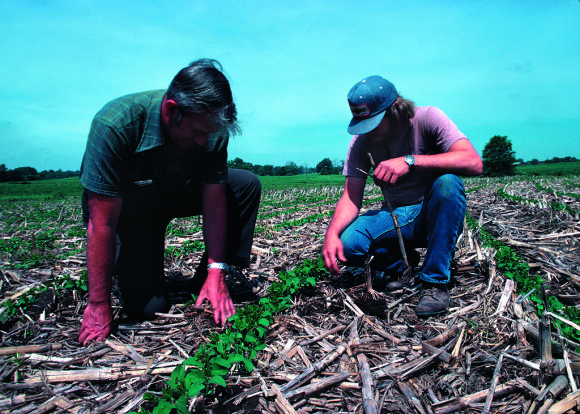
Every now and then, we get notes or calls from readers of Research/Penn State about something that ran in the magazine. Sometimes the message is a thank you or a compliment; other times it’s more critical. Either way, it’s good to know that a reader cared enough about one of our stories or images to get in touch with us about it.
Soon after the Spring 2015 issue of the magazine came out, I got a call from a reader in Virginia pointing out a mistake in my story about biologist Dan Cosgrove’s work on plant cell walls (“Tear Down This Wall”). John Dickerson, who graduated from Penn State in 1969 and earned a master’s degree here in 1971, took issue with the statement that because we don’t know how to efficiently harvest the energy stored in structural parts of plants, crop residue such as cornstalks is wasted.
John knows what he’s talking about; he spent his career working for the USDA, in what used to be called the Soil Conservation Service. He agreed that the burning of massive amounts of crop residue, as happens with sugar cane in Brazil and elsewhere, is wasteful. But he said that, in the U.S. at least, residue from cornfields is generally not wasted. The stalks are either plowed under to help replenish the soil or are left on the surface to prevent erosion and help the soil retain moisture. If cornstalks someday become a good source of biofuel, corn farmers who sell their residue for that purpose will need to find some other way to prevent soil erosion and perform the other functions the old stalks are used for now.
We have revised the story accordingly and will soon post the amended version online, on our Research News page.
John also pointed out that biofuel crops such as switchgrass and poplar are perennials; they don’t produce crop residue every year as corn and other annuals do. The fundamental problem of how to break down their cell walls to more efficiently convert them into biofuel remains, however.
Another reader called a few days after John to suggest that biodiesel from algae could be the carbon-neutral fuel we’re looking for. While algae offer some promise, the technology for using them as a large-scale fuel source is still under development.
Thank you to both callers. It’s gratifying to know you’re reading our stories so closely.
